
Advanced Body Surfing Tips
by WAW Handplanes
"Never body surf alone and always stay within your limits"
Introduction.
So you're comfortable catching waves from out the back and also sneaking into some shore break barrels. You can make the drop and are regularly trimming across the waves face.
It’s now time to level up.
In this advanced body bodysurfing section we will cover:
WHERE TO BODY SURF
BODY SURFING BREATH HOLDS
BODY SURFING BIG BEACH BREAKS
BODY SURFING BIG SHORE BREAKS
BODY SURFING REEF BREAKS
ADVANCED BODYSURFING TRICKS
MAKING A BODY SURFING BARREL
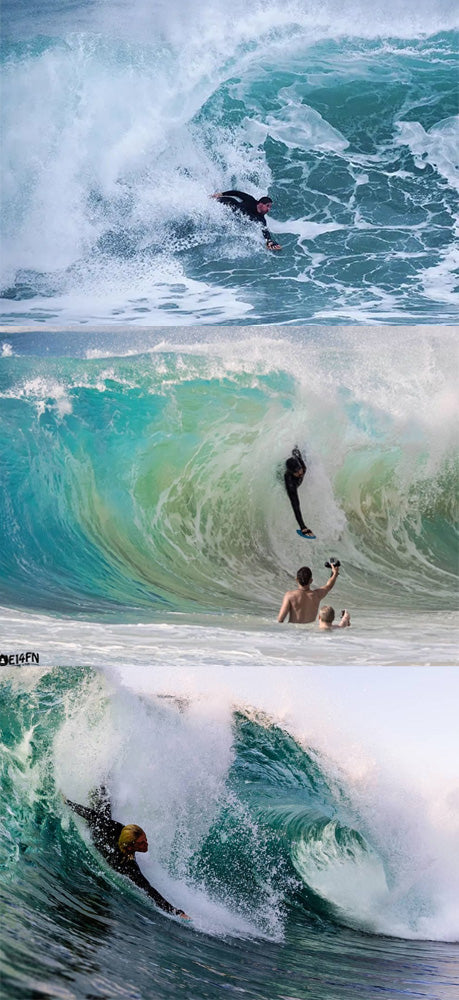
Beach breaks, shore breaks and reef breaks
1. Where to body surf.
1.1 Big beach breaks
Now that you’re building your skill set and confidence the first step would be to head out on some bigger swell days at the beach. On the bigger days there is a lot more water moving around and you’ll start to experience stronger sweeps (water moving parallel to the beach) and rips (water moving offshore). Swimming out past the breakers on the bigger days can be tough so see section 1.2 for a few tips on how to navigate this.
1.2 Big shore breaks.
If its short sharp hollow waves you’re after then look no
further than the shore break on big swell days around the hightide mark. The higher tide allows the waves to pass over some of the sand banks off shore that would normally cause them to break on the lower tides and can therefore unload a lot more energy when they break on the shoreline.
Again approach this kind of wave with caution. The waves are fast, steep, heavy and very shallow. The risk of injuries are much higher in the shore break than out the back, so please work up to surfing these on the bigger days and only ever surf within you limits.
1.3 Reef breaks.
For many, reef breaks are the pinnacle of expert body surfing. Reef breaks form in areas where deep water reaches a shallow reef shelf causing the ocean swell to rapidly steepen and often creates very heavy and hollow barrels. The difference between reef breaks and beach breaks is that reef breaks break over hard reef or rock shelves and beach breaks break over sand. You can often find reef breaks on the corners of headlands or offshore from rocky coastlines. You want to be looking for a section where the waves break consistently in the same spots on each set, indicating that there is a shallow reef shelf underneath. If your keen to body surf a new potential reef break either watch other surfers for a while before you head in to see where they sit and where they paddle in and out. If you’ve never seen anyone surf a spot before ask yourself why. It may be very sharp reef or too dangerous in other ways. A good idea is to always snorkel a new reef break on small days before you surf. This way you can work out what the topography under the water is like. So when your actually surfing it you are much more aware of what to expect.
Reef breaks can be surfed in any swell size with some reefs only working in very small swells and others only firing up on the larger swells.
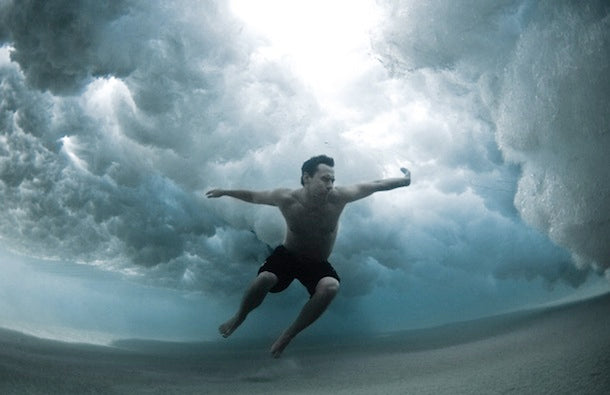
2. Body surfing breath holds.
Body surfing beach breaks on big days or anywhere with big surf, requires a fair amount of breath holding ability. Its not so much the hold downs after a wave that push your limits it’s the 5,6 7 waves you take on the head in a row after catching or missing a wave. This requires extended breath holding over multiple waves in a short period. You can train for this on land. A good way to do it is to hold your breath when walking, when you feel the urge to breath, breath in and out a couple times and immediately go into another breath hold. Repeat this 5 or 6 times. This simulates holding your breath and swimming between waves. It will be hard at first, but you’ll soon see some improvement over time both on land and in the water.
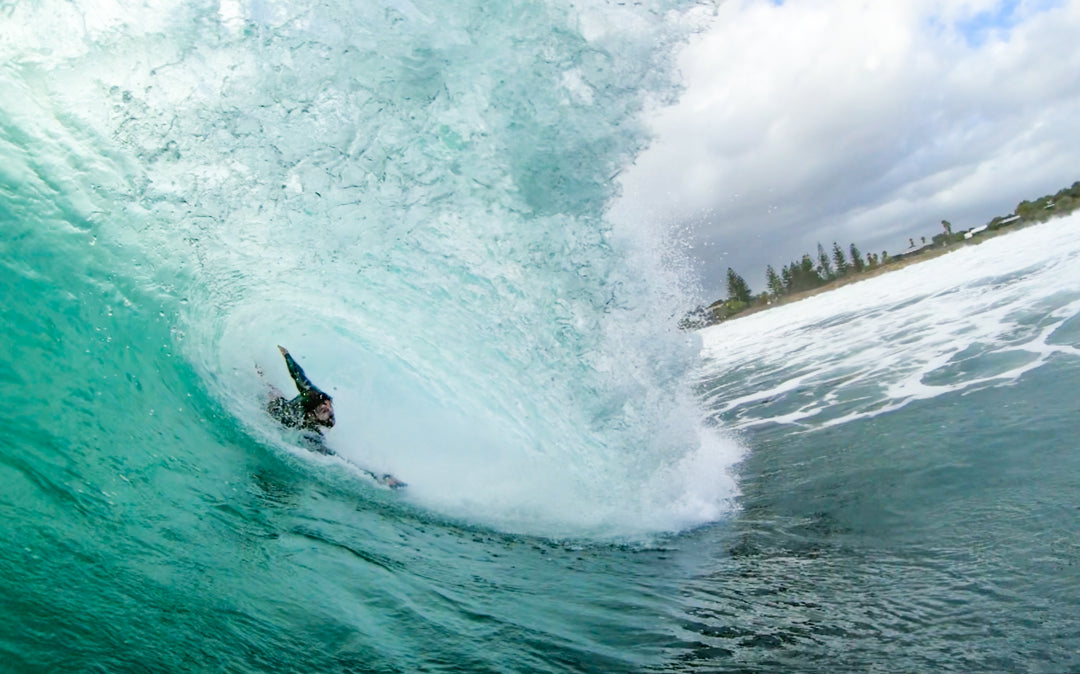
3. Body surfing big beach breaks.
3.1 Use the rip currents.
Rip currents are channels of water that move from the beach offshore. So, once you have experience with these you can start to use them as express highways to get you out the back fast. Please note rips can be dangerous and they kill more inexperienced beaches goers each year than anything else so please approach with caution and only use them if you are 100% comfortable you can navigate them well. If you get stuck in a rip unintentionally or you would like to exit the rip to surf the best thing to do is to swim sideways, trying to swim back to shore will result in you tiring quickly and being swept out further. When bodysurfing a great tip in this situation is to turn over onto your back and just kick with your fins. This way you can steady your breathing, keep your head clear of the water and let your legs do the work.
How to spot a rip current
Use this text to share information about your brand with your customers. Describe a product, share announcements, or welcome customers to your store.
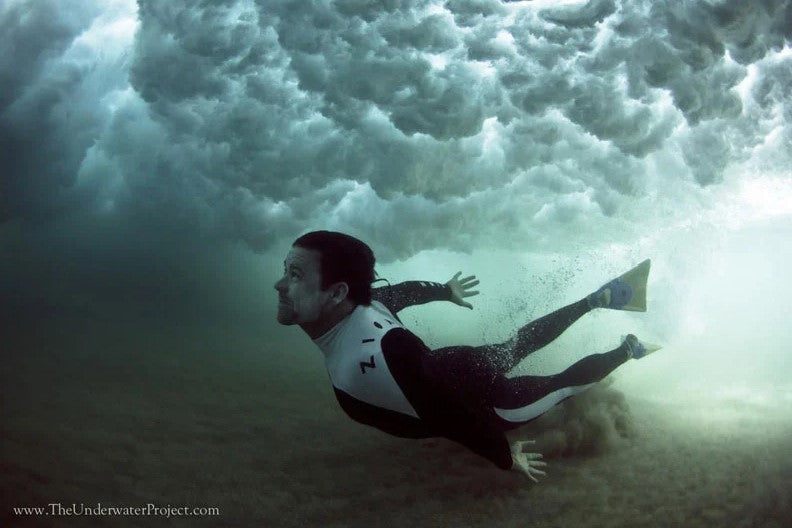
3.2 Duck dive timing:
When your duck diving waves on larger swell days the waves have considerably more power and so it’s a good idea to dive deeper on the duck dive. A hot tip here is to not surface too quickly after a duck dive, if you do, you may get caught up in the after pull of the wave and pulled around a lot more than you’d like. The beauty of body surfing is that you don’t have much equipment
to worry about so its a good idea is to duck dive deep and upon the ascent open your eyes underwater and look for the spots where the light comes through the clouds of turbulent water. These areas will be less turbulent and you can steer your way up through them and surface in relatively calm water. This is a great feeling and view and I highly recommend trying it.
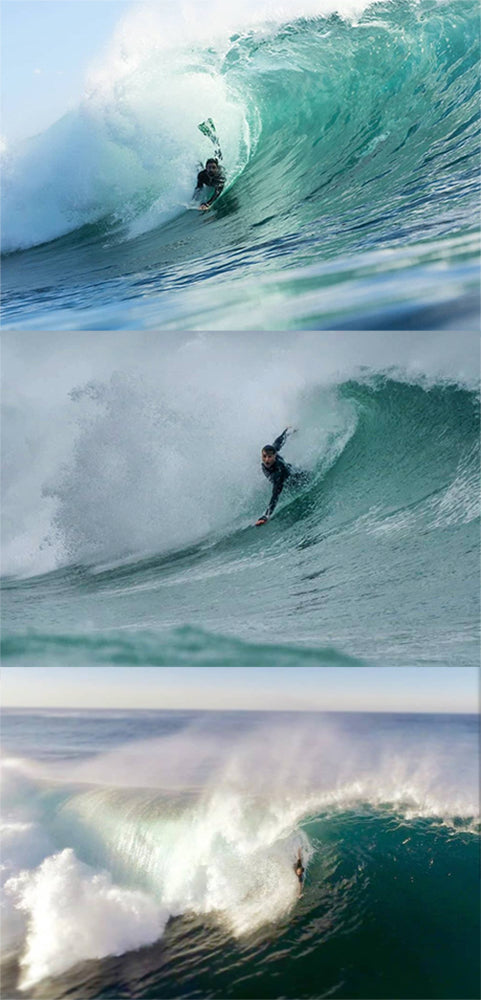
3.3 Catching and riding large beach breaks.
You’ve used the rip and your advanced duck diving skills and you’re now out the back on big day at the beach. Now for the really fun part…
In a perfect world you might be looking for a wave that’s breaking back into the rip, that way when your ride is over you can use the rip to swim back out. This is not always possible so simply choose somewhere where the waves are breaking left or right or even straight if you’re after some big closeouts.
As the big set waves approach you, try seeking out the 2nd or 3rd waves in the set. They’re usually a little bigger and better after the first one has taken some little water off the sand bank. Taking the first wave in a set also has the disadvantage of leaving you exposed on the inside to the remaining waves in the set, which on big day can wash you back into shore, or at least prevent you from getting back out easily.
If the waves are big and fat (not large but not very steep) you will need to swim hard to get on it. The trick with the bigger waves is to keep on paddling and kicking until you’re are definitely on the wave , if you stop before this point you’re likely to fall off the back the wave and it will proceed unridden, and you’ll be left vulnerable to the next wave on the head. Once up and riding the principles of bodysurfing are the same as riding the smaller waves in that you want to trim across the wave, maintaining a nice high line. The main difference here is the larger waves will give you much more speed, especially when using a body surfing hand plane, which in fact makes it easier to body surf the bigger waves in many ways than the smaller weaker waves. If the wave steepens and gets near vertical, try dropping down the waves face bit to avoid being ‘bucked off’ and loosing connection to the wave, but not too far down, use your handplane to stall your descent, as this may put you at risk of being hit in the back of the head by the falling lip of the wave. You’ll inevitably do both at some stage and you’ll soon work where the sweet spot is.
If the waves are steep at the take-off don’t be afraid to drop into the wave quite late. The larger steeper waves will give you much more speed off the start than smaller ones so you’ll make sections of the wave that you didn’t think were possible if you commit to it.
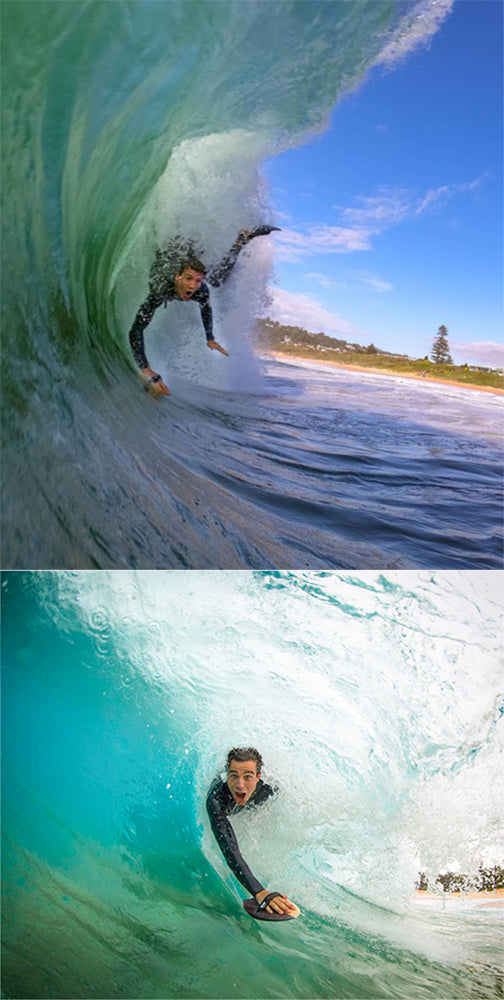
4. Body surfing big shore breaks.
Body surfing large shore breaks is some of the scariest but most fun forms of bodysurfing you can do. You can score some huge barrels and some epic rides, but the danger of the shallow water has to be taken into account.
To body surf large shore breaks safely we have the following tips:
Get down it.
Shore breaks are steep and barrel quickly. If you don’t get down the wave you will be thrown over with the lip. If you’re going for a wave swim hard and make sure you get down it. If you don’t think you’re going to get down the face of the wave before it crashes over, pull back and wait for another one. It's also worth sitting a little further on the inside of the wave than you normally would out the back, as the wave will be nice and steep. You can mostly drop into the waves last minute with minimal swimming if the timing is right.
Getting to the bottom and then setting your line is key here. If you try to trim across a large shore break on a high line you will almost definitely be bucked off the wave or loose connection to the waves face as it steepens. If you find yourself falling from a lot of shore break waves and losing all your speed at the bottom, this is probably what’s happening. Get down it first, then set your line and hold on for the ride.
Stick to the face
Upon your descent down the face of the wave make sure you try to stay engaged to the waves face, whether its with your body or your handplane, just make sure you have some form of edge in the waves face.
The safest place is in the barrel
You’ve committed to the wave, you’ve navigated the drop and you’ve set your line for the barrel. Now some people at this point will try to pull out through the back of the wave, but this can often result in the body surfer being sucked up and over with the wave crashing down into the shallow water bum, back, shoulder or worse neck first, especially on the bigger days. DON’T DO THIS. The safest place to be when body surfing shore breaks is inside the barrel. Here the main energy of the wave is throwing over the top of you. And when the barrel eventually collapses you’re instantly surrounded by millions of cushiony bubbles. The lip of the wave crashing Infront of you has also washed up the sand a bit making it less of hard surface and more of a softer mix of sand and water. Not to mention that being inside the barrel is also the best view on the planet.
To be continued...
Sign up to our mailing list
About us
WAW Handplanes Copyright 2022
